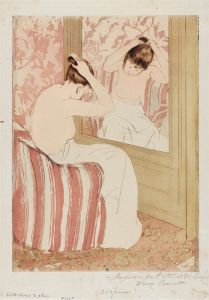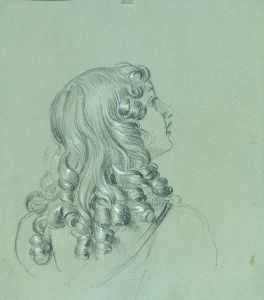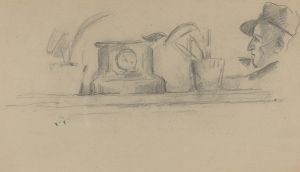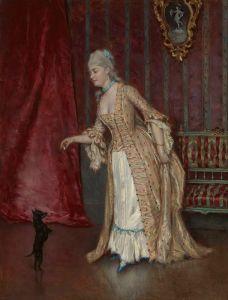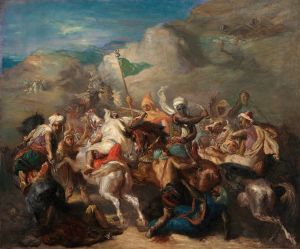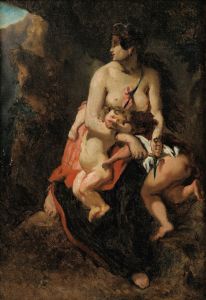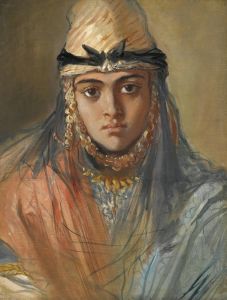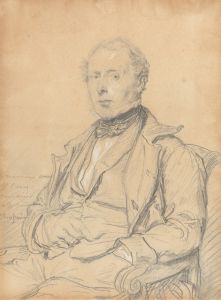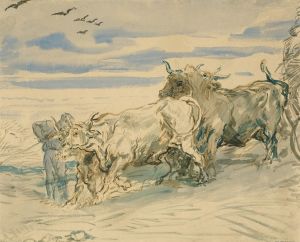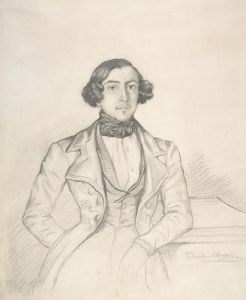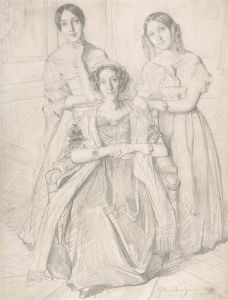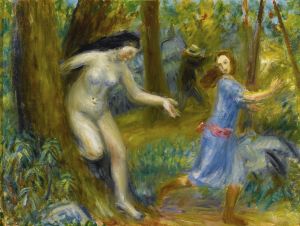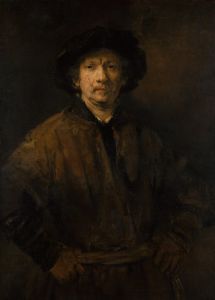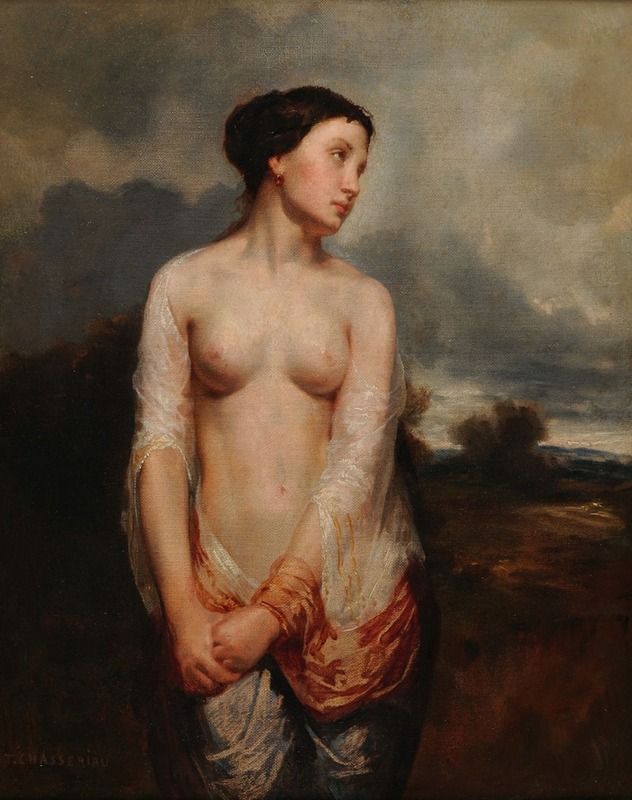
La Captive
A hand-painted replica of Théodore Chassériau’s masterpiece La Captive, meticulously crafted by professional artists to capture the true essence of the original. Each piece is created with museum-quality canvas and rare mineral pigments, carefully painted by experienced artists with delicate brushstrokes and rich, layered colors to perfectly recreate the texture of the original artwork. Unlike machine-printed reproductions, this hand-painted version brings the painting to life, infused with the artist’s emotions and skill in every stroke. Whether for personal collection or home decoration, it instantly elevates the artistic atmosphere of any space.
Théodore Chassériau's painting La Captive is a notable work by the French Romantic artist, created in 1848. Chassériau (1819–1856) was a prominent painter known for his fusion of Romanticism and Neoclassicism, as well as his exploration of Orientalist themes. La Captive is a striking example of his ability to depict the human figure with emotional depth and technical precision.
The painting portrays a young woman seated in a confined space, her hands bound, evoking the theme of captivity. The subject's expression and posture convey a sense of melancholy and vulnerability, while the rich, warm tones of the composition enhance the emotional resonance of the scene. Chassériau's use of light and shadow adds a dramatic quality to the work, highlighting the contours of the figure and creating a sense of intimacy.
La Captive reflects Chassériau's interest in Orientalism, a popular artistic and literary movement in 19th-century Europe that romanticized and exoticized the cultures of the Middle East, North Africa, and Asia. This interest was likely influenced by his travels to Algeria in 1846, where he was inspired by the people and landscapes he encountered. While La Captive does not explicitly depict a specific cultural or geographic setting, its theme and aesthetic align with the Orientalist fascination with themes of sensuality, mystery, and the "exotic."
The painting is also a testament to Chassériau's skill as a portraitist and his ability to convey psychological depth. The figure's delicate features and the intricate rendering of her clothing and surroundings demonstrate the artist's technical mastery. At the same time, the work invites viewers to reflect on the emotional and symbolic implications of captivity, a recurring theme in art and literature.
Today, La Captive is housed in the Musée d'Orsay in Paris, France, which holds an extensive collection of 19th-century art. The painting is considered one of Chassériau's significant works and is frequently cited as an example of his unique artistic vision, which bridged the Romantic and Neoclassical styles while incorporating elements of Orientalism.
Chassériau's career was tragically cut short by his untimely death at the age of 37, but his work has continued to influence artists and art historians. La Captive remains an enduring example of his talent and his ability to evoke complex emotions through his art.





